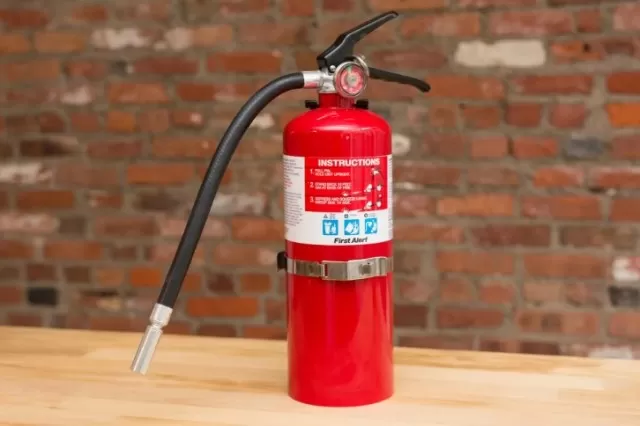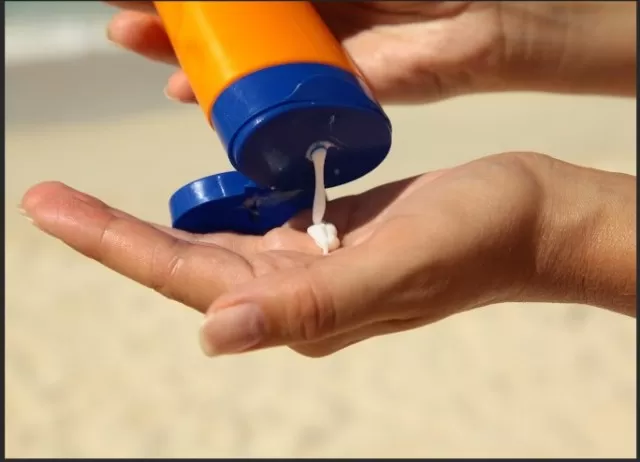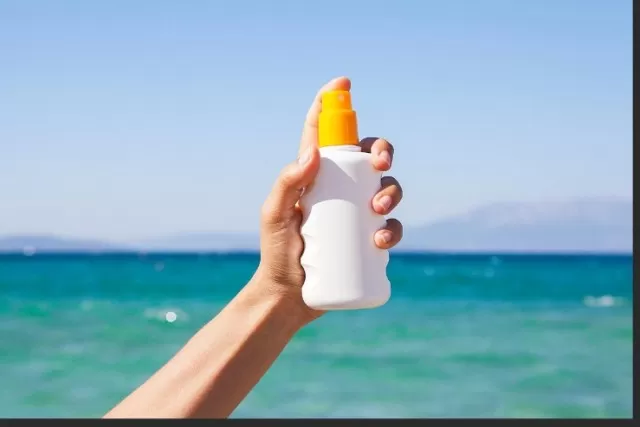Surprising Expiry of Everyday Items. While the food industry has made significant strides in imparting awareness about the importance of “use by” dates on perishable items, there remains a realm of everyday essentials that bear an expiration of their own.
Beyond the confines of the kitchen, there exist numerous items within your domicile, garden, and garage that possess their own lifespans, and disregarding these temporal limits can result in hazards that are not to be taken lightly. Take heed, for here lies a compilation of seemingly timeless products that, surprisingly, possess an innate shelf life—despite the absence of printed expiration dates.
The contours of expiration extend far beyond the culinary realm. Items that serve you in your daily life can carry invisible timelines, hinting at their eventual decline. From household products to outdoor tools, these entities require acknowledgment and care, as their prolonged use can pose dangers and diminish efficacy.
While the symphony of education resonates loudest in the food industry, it’s imperative to cast a broader spotlight. In the sanctuary of your home, the tranquility of your garden, and the functional haven of your garage, expiration shadows linger. The appreciation of these silent clocks is essential, and the proactive consideration of these lesser-known expiry dates is paramount to your safety, comfort, and efficiency.
Prioritize Safety Above All Else!

Ensuring the Longevity and Effectiveness of Fire Extinguishers.
Fire extinguishers, an essential tool for fire preparedness, typically have a lifespan spanning from 5 to 15 years.
However, it’s crucial to note that regular maintenance and eventual replacement are key to their continued reliability. When examining a fire extinguisher, your initial focus should be on the pressure gauge, if one is present, located at the top of the device.
A green reading indicates optimal conditions, signifying its readiness for action. Conversely, a red reading serves as a clear indicator that it’s time to dispose of the extinguisher.
In the case of handheld extinguishers, a comprehensive check involves more than just the pressure gauge.
A simple method to assess its viability is to gently rotate and shake the canister while listening closely. If the absence of any audible movement is detected, it could imply that the fire-suppressing substances within might have solidified over time.
This phenomenon could compromise the extinguisher’s functionality even if the pressure gauge suggests otherwise. In such cases, immediate replacement of the extinguishing agent becomes imperative to ensure that the extinguisher remains fully operational.
By adhering to these proactive measures, you’ll be upholding the fundamental principle of “Safety First,” promoting the dependable performance of fire extinguishers when they’re needed most.
Guardians of Tomorrow: Safeguarding Child Passengers
A child’s protection is paramount, and a car seat stands as a stalwart defender in the event of an accident.
Yet, even this indispensable shield of safety is not immune to the passage of time. The interplay of heat and cold causes the very materials that compose these seats to undergo cycles of expansion and contraction. Regrettably, this natural phenomenon can erode the seat’s ability to fulfill its life-saving role effectively. Consequently, it is imperative to acknowledge that each car seat has a finite lifespan.
Experts concur that a car seat should be regarded as a temporal guardian, with its protective qualities having an expiration date.
To maintain the highest standard of safeguarding, it is recommended to consider replacing a car seat approximately 6 to 10 years after its original date of manufacture. This crucial information is often imprinted discreetly on the seat itself, typically found on the underside or an inconspicuous side panel.
By adhering to this practice, caregivers ensure that their young passengers continue to benefit from the most advanced safety measures available.
Moreover, a note of caution surfaces when contemplating the acquisition of a second-hand car seat.
While the allure of thrift may be tempting, it’s essential to recognize that a previously owned seat might carry hidden consequences. Any preexisting damage, even if not immediately apparent, has the potential to impede the seat’s performance during a critical moment.
Therefore, the judicious choice is to opt for a brand-new car seat, safeguarding the precious cargo it will carry and upholding the sacred responsibility of preserving young lives.
Preserve Your Think Tank: The Importance of Bicycle Helmet Renewal

Your safety is a matter of paramount concern, especially when you’re on two wheels.
A bicycle helmet serves as a steadfast guardian against potential head injuries, yet its reliability is not infinite. The very materials that constitute these helmets react to the ebb and flow of temperature – expanding under heat and contracting in the chill.
Unfortunately, this consistent metamorphosis can lead to a gradual erosion of the helmet’s protective prowess, necessitating vigilant attention.
Experts concur that taking heed of your helmet’s lifespan is akin to safeguarding your well-being.
With this in mind, it is prudent to consider the periodic replacement of your bicycle helmet, approximately every three to five years. This proactive approach ensures that you consistently benefit from the pinnacle of safety features, untouched by the gradual wear and tear of time.
Additionally, the cardinal rule holds: should your helmet experience any form of damage, it must be replaced without hesitation. A helmet compromised in any way – be it a minor dent or a seemingly innocuous crack – can no longer guarantee your utmost protection.
In your pursuit of outdoor adventures, your helmet stands as a crucial partner in safeguarding your head, the very essence of your intellect and vitality.
By adhering to the recommended replacement intervals and addressing any signs of damage, you uphold the principle of “Use Your Head” in the most literal sense, ensuring your continued safety and preserving your cognitive treasure for years to come.
Farewell to Old Hues: The Lifespan of Paint
Parting ways with remnants of paint from yesteryears might be the wise choice you’ve been considering.
Paint, although capable of bringing vibrant transformations, doesn’t escape the clutches of time itself. If you’re clutching onto cans of paint that have been lingering since a bygone era, it’s time to make a decision – either put that paint to use promptly or bid it adieu. The reason behind this isn’t merely sentimentality; paint does lose its effectiveness as it ages, prompting the need for thoughtful disposal.
For those cans of paint that have been opened and exposed to the elements, a guideline of four years emerges as the threshold.
Beyond this point, their potency wanes, and they become more suitable for the trash than for actual application. The signs are clear: if the paint within has dried up, developed mold, or formed unsightly chunks, it’s a definite indication that its prime has passed, and the can should be shown the exit.
However, the story takes a different turn for unopened cans of paint.
Latex paint, in its pristine and unopened state, can still be harnessed for artistic endeavors for up to a decade. On the other hand, the more patient among us will find solace in knowing that unopened oil-based paint can serve its purpose effectively for a remarkable span of up to 15 years.
So, as you navigate the realm of color and creativity, remember that paint, too, has a lifecycle.
By adhering to these guidelines, you ensure that your artistic endeavors are powered by the vibrancy and effectiveness that fresh paint brings, bidding a respectful farewell to the old shades that have served their time.
Sun Safety Reimagined: Embrace Fresh Sunscreen

Shielding your skin from the sun’s potent rays is a vital endeavor, and the tools at your disposal should be as effective as possible.
However, not all sunscreens stand the test of time, and their protection might wane as the years go by. Consider this your nudge to rethink that old bottle of sunscreen and prioritize its rejuvenated counterpart.
Recent findings from the Mayo Clinic spotlight the fact that sunscreen, just like any other product, has a limited shelf life.
In the case of this protective elixir, its efficacy tends to persist for only around three years. But don’t let these revelations discourage you; they simply emphasize the importance of staying up-to-date with your sun care arsenal.
Health professionals around the world concur on a smart strategy: investing in a fresh bottle of sunscreen each year.
This approach not only ensures that your skin remains shielded from the sun’s potentially harmful rays but also safeguards you against the unseen potential risks. A sunscreen bottle that basked on the beach with you last summer could potentially host bacteria that have taken residence over time.
By embracing the habit of an annual sunscreen renewal, you’re not only preventing sunburns but also sidestepping potential contamination.
In the journey of maintaining healthy and radiant skin, sunscreen is an invaluable ally.
By adhering to the advice of experts and welcoming new bottles of sunscreen into your regimen, you’re not only prioritizing your skin’s well-being but also embracing a comprehensive approach to sun safety that extends beyond the obvious.
*The information is for reference only.